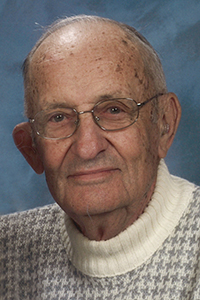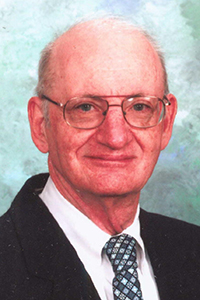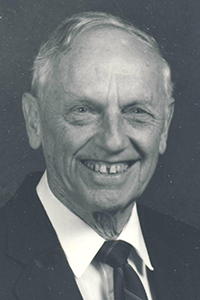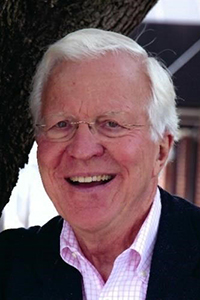John R. E. Hoover '47
Sept. 1, 2020—John grew up during the Great Depression. His parents were poor farmers, but instilled a love for learning and a strong work ethic. John was valedictorian at Replogle High School, New Enterprise, Pa., and pursued a chemistry career by enrolling at Juniata College. During his second year of college, John was drafted into the U.S. Army and married his high school sweetheart in a hurried ceremony before departing for Japan. The voyage changed course twice because nuclear bombs were being dropped and he was re-routed to the Philippine Islands. John served as a hospital pharmacy tech and a non-combatant, and earned the Good Conduct Medal, American Theater ribbon, Asiatic Pacific Theater Ribbon, Philippine Liberation Medal, Philippine Republic Presidential Unit Citation Badge, and the World War II Victory Ribbon. John reunited with Janet, the G.I. Bill paid for a good bit of his subsequent education, he completed his last two years of college in just one year, and he finished in the top 1% of his class. He went on to earn his master’s degree in organic chemistry in 1949 from the University of Pennsylvania, Philadelphia, Pa., and received his Ph.D. in organic chemistry in 1953. John was employed at Wyeth Institute of Applied Biochemistry as a Senior Scientist. At the same time, he worked at the University of Pennsylvania as a Research Associate with Nobel Laureate Richard Kuhn and with Paul György, who received the 1975 National Medal of Science from President Ford for his work on vitamins. In the 1950s, John had the distinction of co-authoring scientific papers with renowned scientists György and Kuhn on their work isolating Lactobacillus bifidus growth factor activity in human milk and its anti-staphylococcal properties. John then worked at SK&F Laboratories, now GlaxoSmithKline, where he remained until he retired in 1986 as Director of Research Chemistry for one of the largest drug companies in the world. While at SK&F, he noted the lack of any apparatus in the industry to calculate the melting point of compounds, a very basic task in determining their purity. Always a tinkerer, John cobbled together a device for himself in his home workshop, which was so popular that he mass-produced it, patented his invention in 1960, and contracted with Arthur H. Thomas (now Thomas Scientific) to fabricate it. The Thomas-Hoover Melting Point Apparatus is still used today in laboratories all over the world. John has over 77 patents to his name, mostly in organic chemistry. While at SK&F, he researched cephalosporin antibiotics and published numerous works on his research. John was a member of the American Chemical Society, American Association for the Advancement of Science, American Institute of Chemists, New York Academy of Science, Sigma Xi, Alpha Chi Sigma and Philadelphia Organic Chemists’ Club. John could build or fix anything. His full-service shop in his basement was used to build furniture, houses, and sheds, repair his own cars, and fix things for family and friends with imaginative solutions. John and his wife Janet were active in the Church of the Brethren, having held positions such as deacon, board secretary, and moderator. They spent several weeks working with the Church of the Brethren Disaster Relief Program rebuilding homes destroyed by hurricanes and he was recipient of Juniata College’s Church-College Service Award. John was preceded in death by wife Janet and is survived by son J. Larry Hoover '74, daughters Carol Hoover '72 and Susan, and nine grandchildren, including Eric Hoover '08 and Jason Hoover '08.





